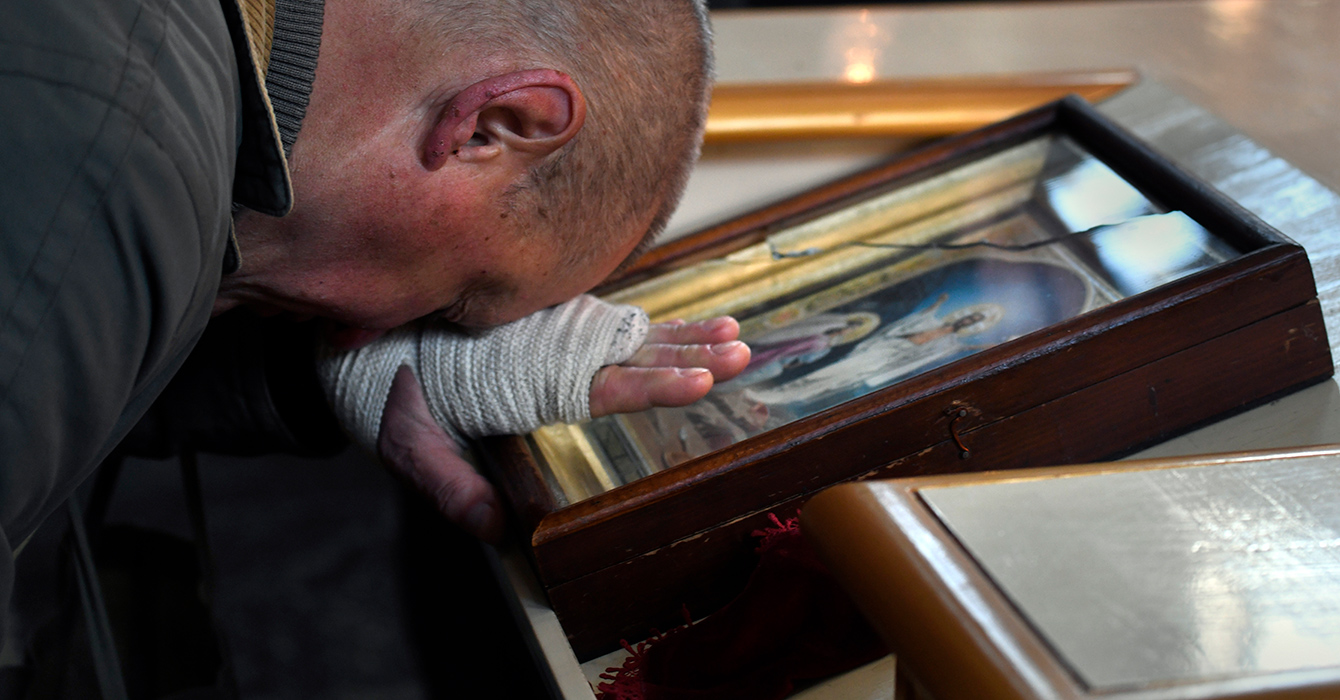Though faith depends on trust in the intangible, pastoral care is often a hands-on endeavor. This is particularly apparent in the hospital where I work as a chaplain, which delegates a few unexpected tasks to the pastoral care staff when a patient passes away — including writing out toe tags and tying them gingerly on the deceased.
When my supervisor first instructed me in this, I forced a calm expression and double-knotted the strings while silently asking, “What have I gotten myself into?” But my discomfort has long since faded. While the nurses perform the hard parts of postmortem care, like taking out catheters and cleaning up blood, I simply glove up and make my small contribution by tending to the toe.
I’ll admit there have been times when I’ve placed the tag hastily, with respect but not much reverence. But other times, I remember where I am and what I’m dealing with. I remember the women who came to Jesus’ tomb to anoint his battered body, and I greet the dead with tenderness.
While these women did not find the dead body they expected, there is great courage in their approach to the tomb. In the Roman world, crucifixion was a deeply ignominious method of death. It was reserved for noncitizens and often used to make an example of political criminals. In addition to inflicting maximum physical and psychological agony on the victim, it brought shame and danger to those around him.
The Semahot, a rabbinic tractate on mourning from around the third century, advised the parents and spouse of a crucified person to move away until the deceased’s body had decomposed beyond recognition. It’s no wonder that after Jesus’ death, his disciples went into hiding.
But some of Jesus’ female followers not only stood at the foot of the cross but also attended to his body in death. They bore witness as Joseph of Arimathea placed him in the tomb, then “prepared spices and ointments” (Luke 23:56) with which they would anoint him after observing the Sabbath.
Their intention in returning to Jesus’ tomb was to lavish care on a body that the world — in a manner particular to oppressive regimes — had tried to destroy. It was this quiet act of resistance that led them to the resurrected Christ. We have much to learn from them about how to treat both the living and the dead.
While crucifixion has fallen out of favor among the global powers of our day, we should not fool ourselves by imagining that one such power, the U.S., is entirely free of state-sanctioned brutality.
On March 7, for example, South Carolina executed a prisoner by firing squad. The death row inmate chose this method because he felt it would cause him less suffering than the electric chair or lethal injection; regarding the latter method, his lawyer said that the state had refused to provide “assurances that these drugs were not expired, or diluted, or spoiled.” A second man was executed by firing squad April 11. This violence lays bare the cruelty inherent in the death penalty.
In this and countless other, often quite quotidian ways — from callousness toward the poor to disdain toward the immigrant — dehumanization happens all around us.
We are surely called to participate in public forms of resistance. But as the women at the tomb demonstrate, in the face of devastating cruelty, gestures of tenderness matter. And when we carry God’s love into desolate spaces, we are inviting the presence of the resurrected Christ.
There are countless ways to honor what the Episcopal church’s baptismal liturgy calls “the dignity of every human being.” I see it in the gentle touch of a patient care technician during a hectic shift, the soft voice of a busy doctor explaining a diagnosis, the reverent silence of a respiratory therapist extubating a terminal patient, the dedication of a labor nurse crafting a keepsake with a stillborn baby’s footprints.
I see it also in the smile of a grocery store clerk and the wave of one driver letting another merge. Wherever we are, however high or low the stakes, tenderness is always a ministry.
As we celebrate Easter, we rejoice in the fact that Jesus lives, and that through him we are saved. It is in the light of the resurrection that we understand the gospel and see how good this good news really is.
But this message of new life is carried to us by women who were willing to care for the dead, who believed that bodies mattered, who grieved deeply yet anticipated resurrection at the last day. The disciples first learned the full meaning of Jesus’ ministry because these women brought tenderness to the tomb.
And so, this Easter season and always, we must ask ourselves: How willing are we to encounter the abject? Can we stand to bear witness to suffering, or will we avert our eyes? Do we know the holiness of washing our neighbor’s feet? Would we be brave enough to roll back the stone of an executed man’s tomb?
It takes courage to care, in body and spirit, for the people the world beats down. To value others in all their beauty and frailty is to make our own hearts vulnerable.
But through acts of tenderness — even ones as small as tying a toe tag — we may find ourselves face to face with the one through whose wounds we are healed, through whose shame we are restored to honor, and through whose death we receive eternal life.









